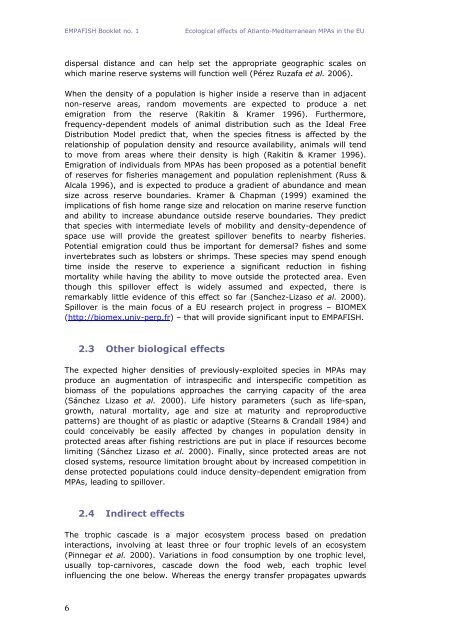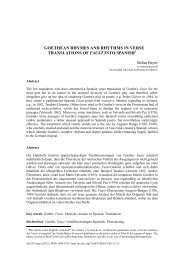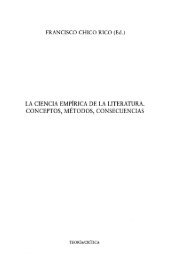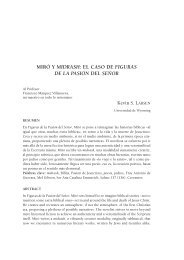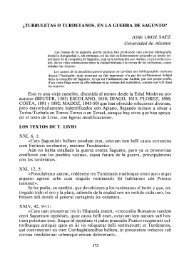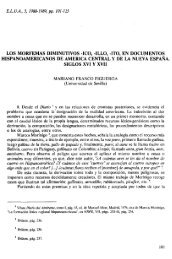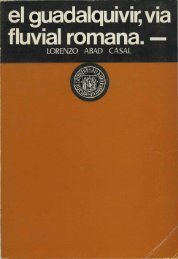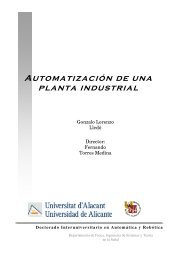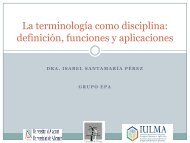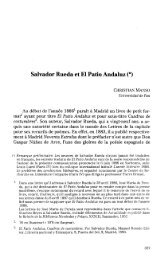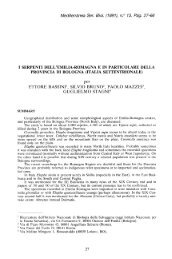ecological effects of marine protected areas empafish project ...
ecological effects of marine protected areas empafish project ...
ecological effects of marine protected areas empafish project ...
Create successful ePaper yourself
Turn your PDF publications into a flip-book with our unique Google optimized e-Paper software.
EMPAFISH Booklet no. 1 Ecological <strong>effects</strong> <strong>of</strong> Atlanto-Mediterranean MPAs in the EU<br />
dispersal distance and can help set the appropriate geographic scales on<br />
which <strong>marine</strong> reserve systems will function well (Pérez Ruzafa et al. 2006).<br />
When the density <strong>of</strong> a population is higher inside a reserve than in adjacent<br />
non-reserve <strong>areas</strong>, random movements are expected to produce a net<br />
emigration from the reserve (Rakitin & Kramer 1996). Furthermore,<br />
frequency-dependent models <strong>of</strong> animal distribution such as the Ideal Free<br />
Distribution Model predict that, when the species fitness is affected by the<br />
relationship <strong>of</strong> population density and resource availability, animals will tend<br />
to move from <strong>areas</strong> where their density is high (Rakitin & Kramer 1996).<br />
Emigration <strong>of</strong> individuals from MPAs has been proposed as a potential benefit<br />
<strong>of</strong> reserves for fisheries management and population replenishment (Russ &<br />
Alcala 1996), and is expected to produce a gradient <strong>of</strong> abundance and mean<br />
size across reserve boundaries. Kramer & Chapman (1999) examined the<br />
implications <strong>of</strong> fish home range size and relocation on <strong>marine</strong> reserve function<br />
and ability to increase abundance outside reserve boundaries. They predict<br />
that species with intermediate levels <strong>of</strong> mobility and density-dependence <strong>of</strong><br />
space use will provide the greatest spillover benefits to nearby fisheries.<br />
Potential emigration could thus be important for demersal? fishes and some<br />
invertebrates such as lobsters or shrimps. These species may spend enough<br />
time inside the reserve to experience a significant reduction in fishing<br />
mortality while having the ability to move outside the <strong>protected</strong> area. Even<br />
though this spillover effect is widely assumed and expected, there is<br />
remarkably little evidence <strong>of</strong> this effect so far (Sanchez-Lizaso et al. 2000).<br />
Spillover is the main focus <strong>of</strong> a EU research <strong>project</strong> in progress – BIOMEX<br />
(http://biomex.univ-perp.fr) – that will provide significant input to EMPAFISH.<br />
6<br />
2.3 Other biological <strong>effects</strong><br />
The expected higher densities <strong>of</strong> previously-exploited species in MPAs may<br />
produce an augmentation <strong>of</strong> intraspecific and interspecific competition as<br />
biomass <strong>of</strong> the populations approaches the carrying capacity <strong>of</strong> the area<br />
(Sánchez Lizaso et al. 2000). Life history parameters (such as life-span,<br />
growth, natural mortality, age and size at maturity and reproproductive<br />
patterns) are thought <strong>of</strong> as plastic or adaptive (Stearns & Crandall 1984) and<br />
could conceivably be easily affected by changes in population density in<br />
<strong>protected</strong> <strong>areas</strong> after fishing restrictions are put in place if resources become<br />
limiting (Sánchez Lizaso et al. 2000). Finally, since <strong>protected</strong> <strong>areas</strong> are not<br />
closed systems, resource limitation brought about by increased competition in<br />
dense <strong>protected</strong> populations could induce density-dependent emigration from<br />
MPAs, leading to spillover.<br />
2.4 Indirect <strong>effects</strong><br />
The trophic cascade is a major ecosystem process based on predation<br />
interactions, involving at least three or four trophic levels <strong>of</strong> an ecosystem<br />
(Pinnegar et al. 2000). Variations in food consumption by one trophic level,<br />
usually top-carnivores, cascade down the food web, each trophic level<br />
influencing the one below. Whereas the energy transfer propagates upwards


